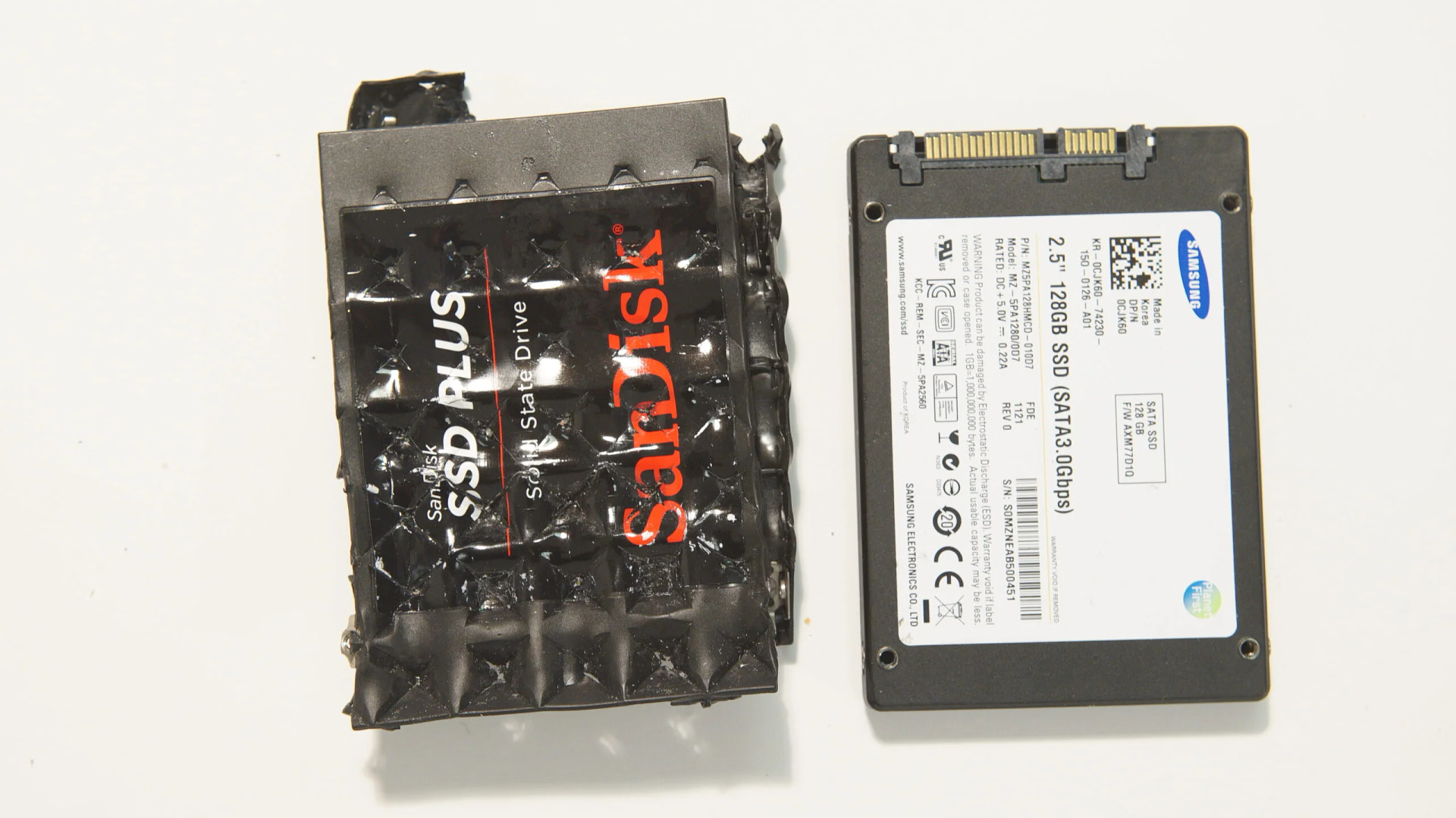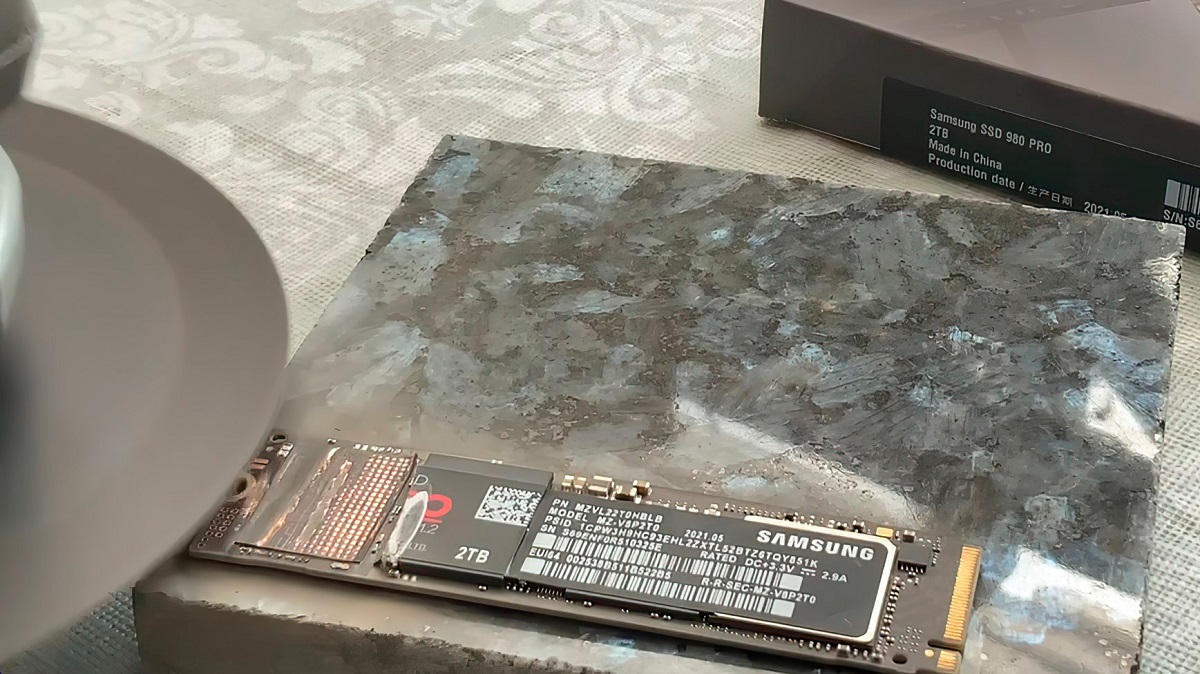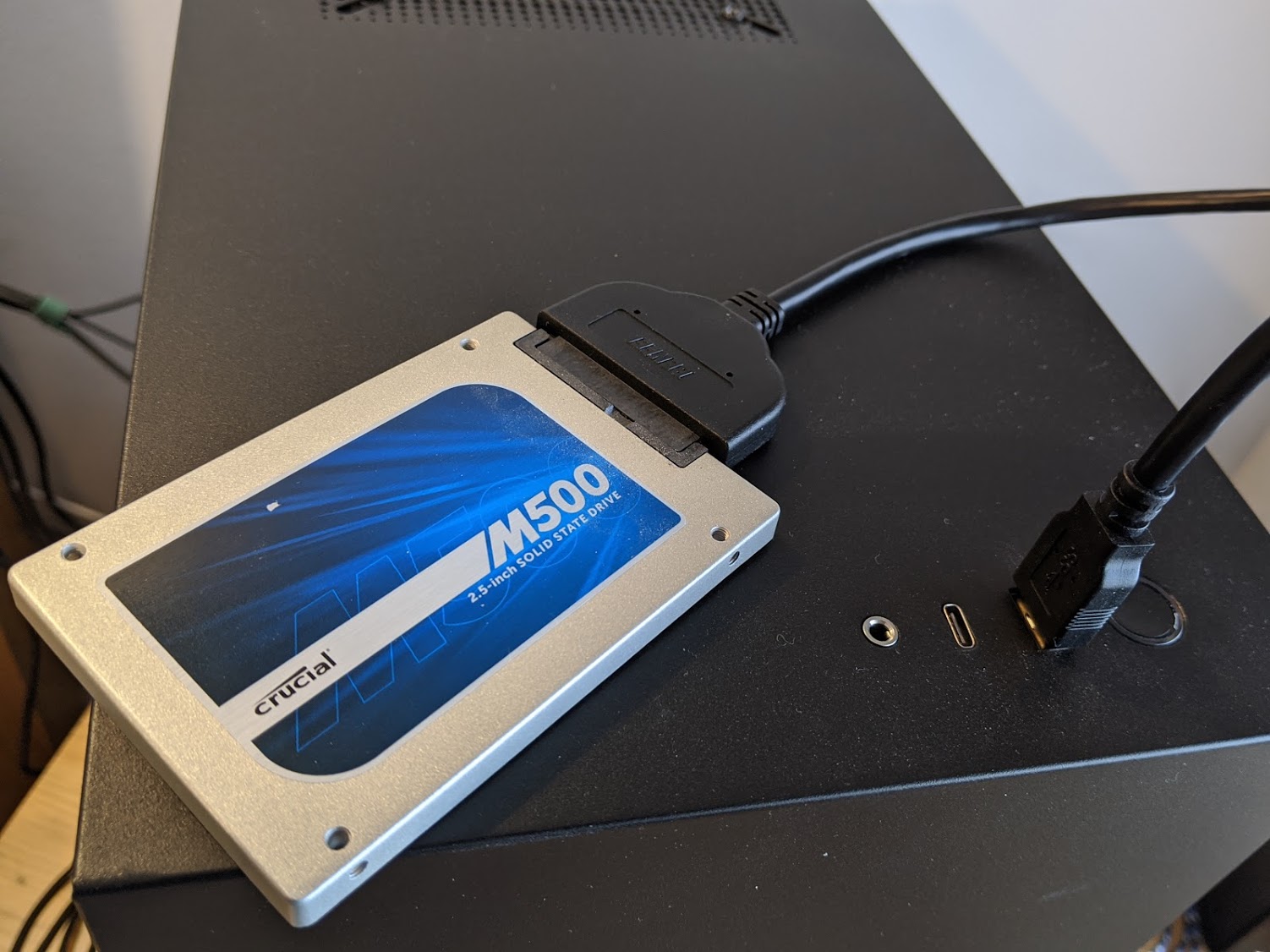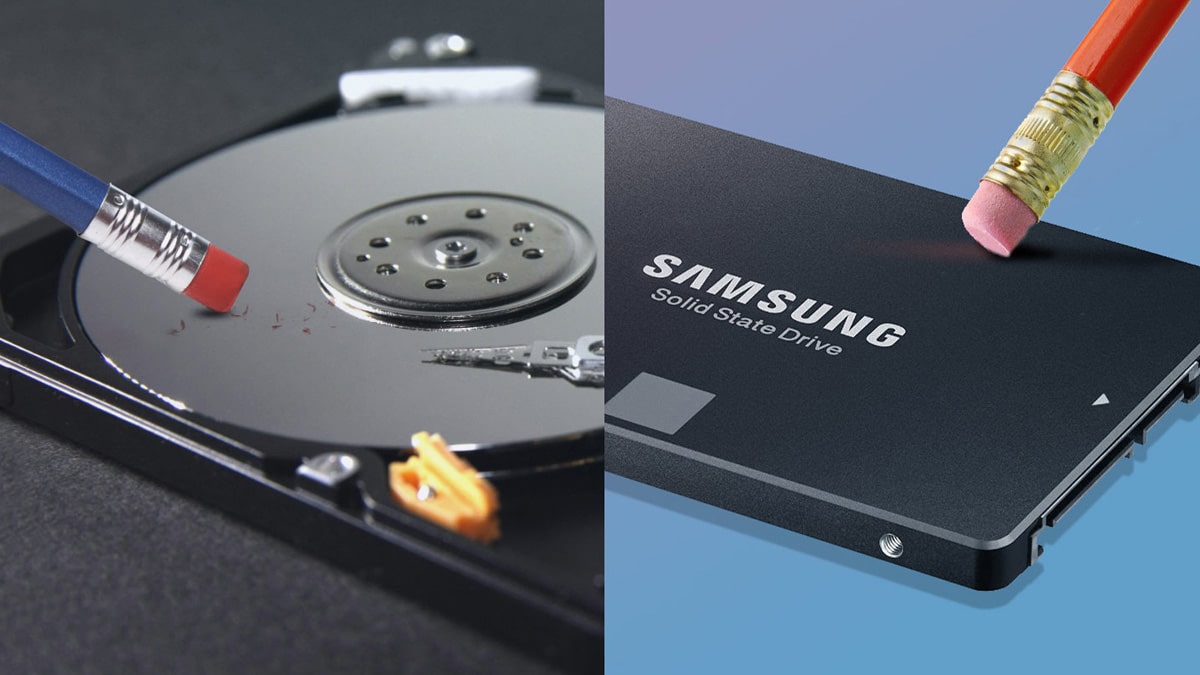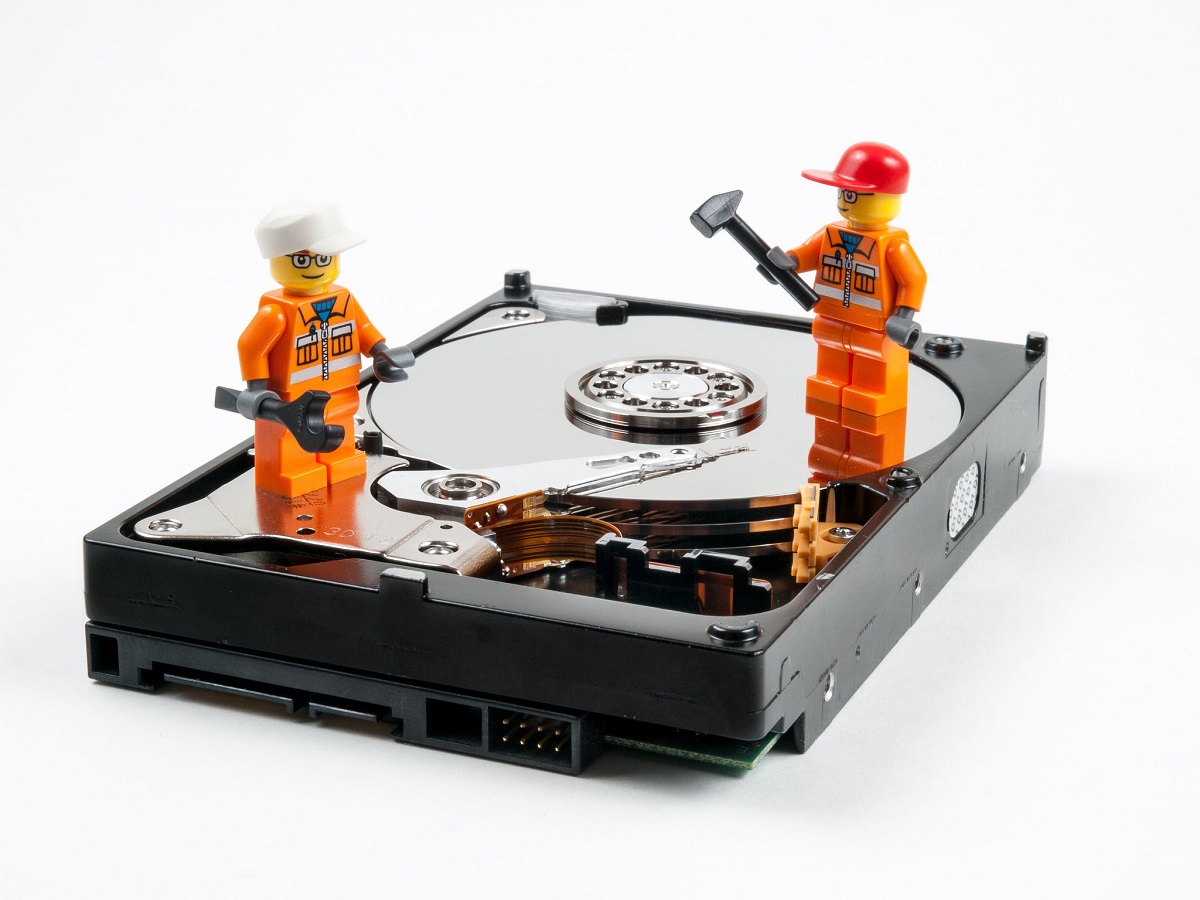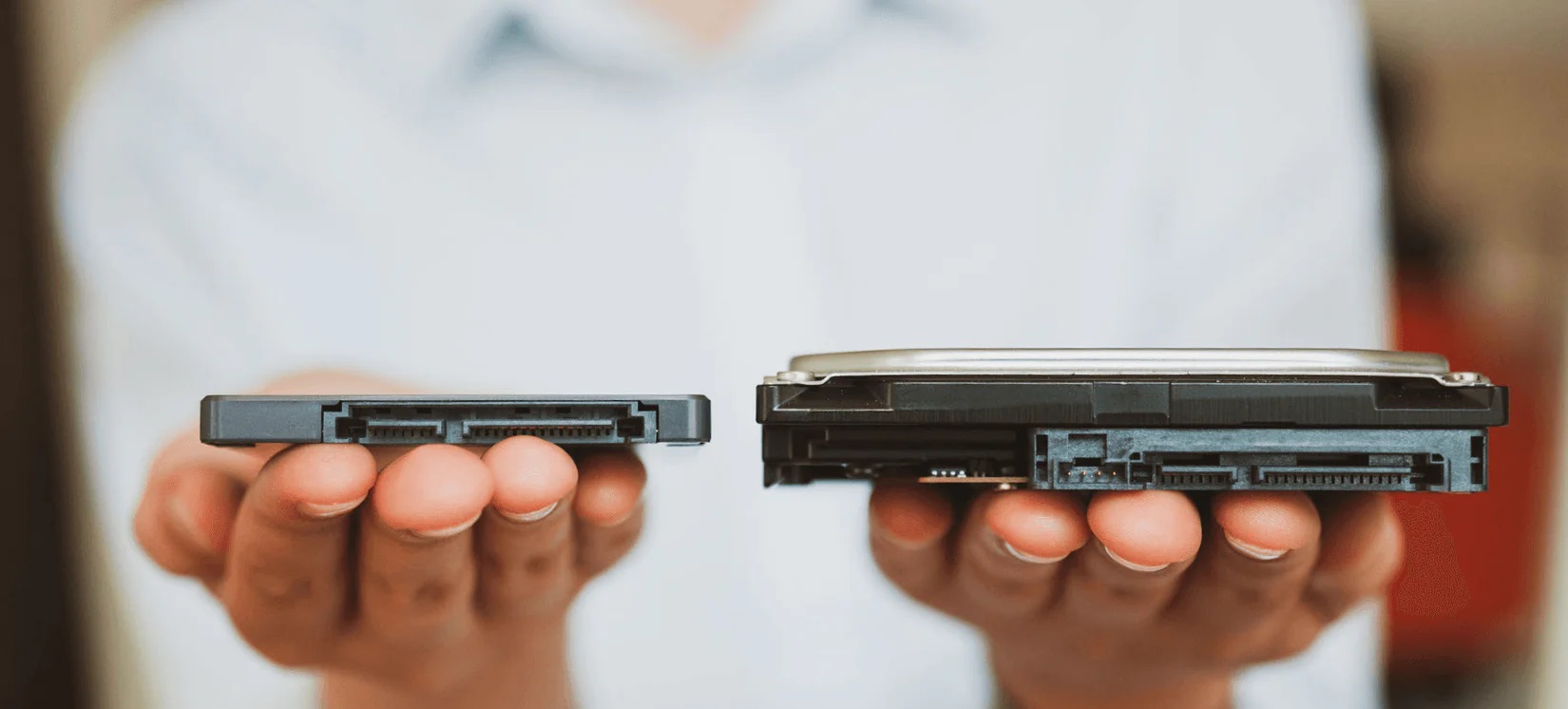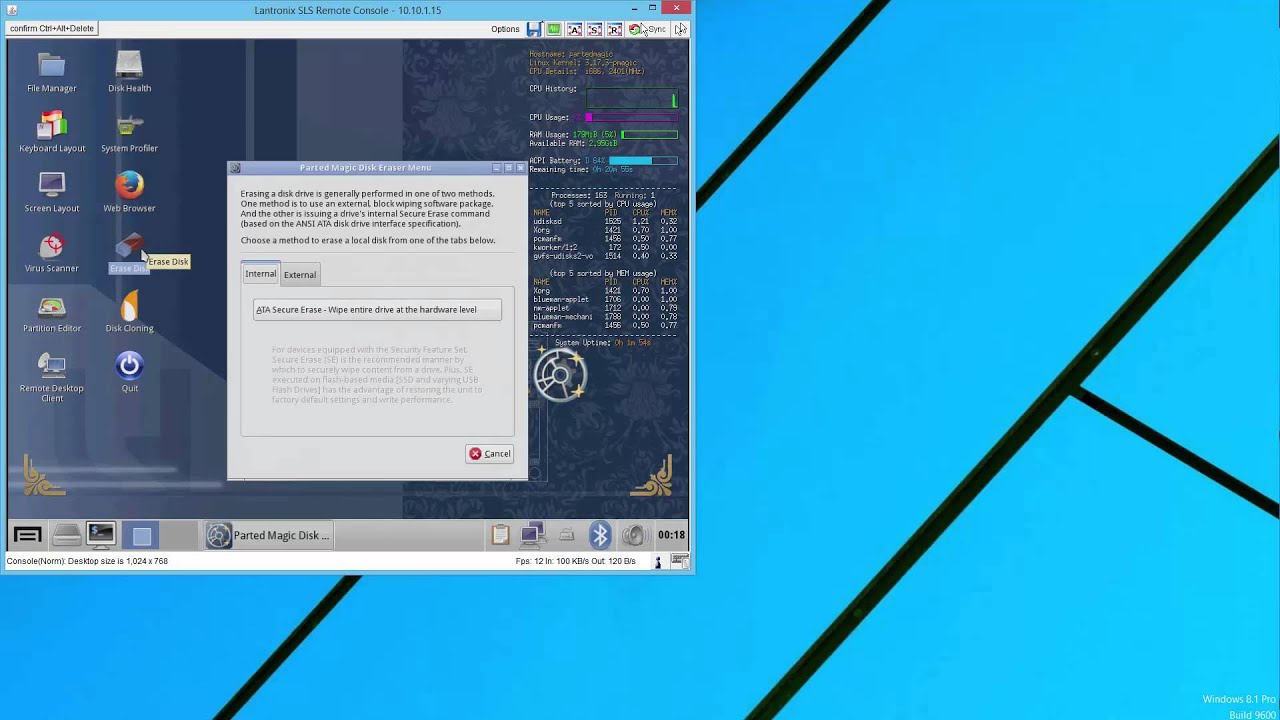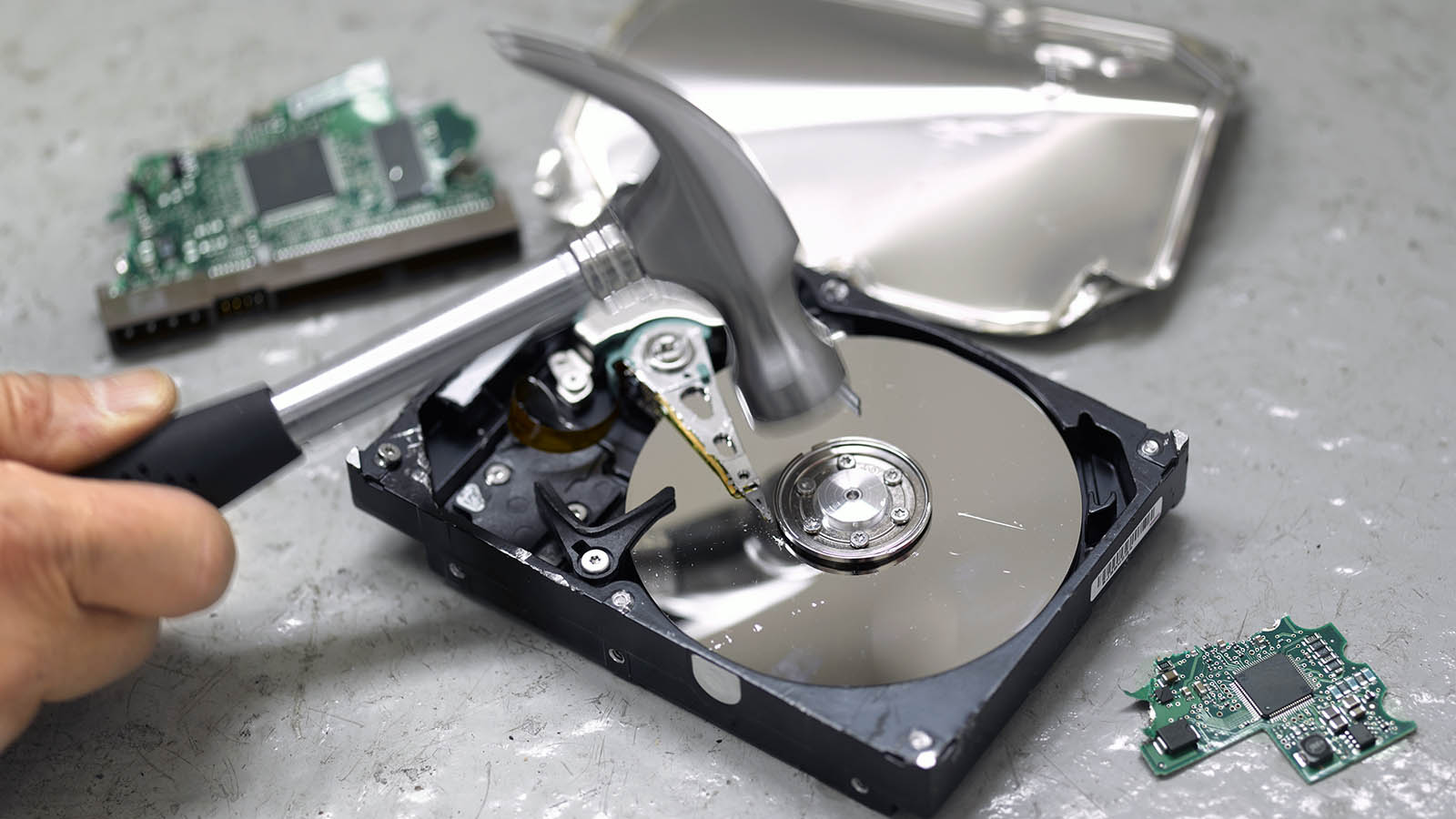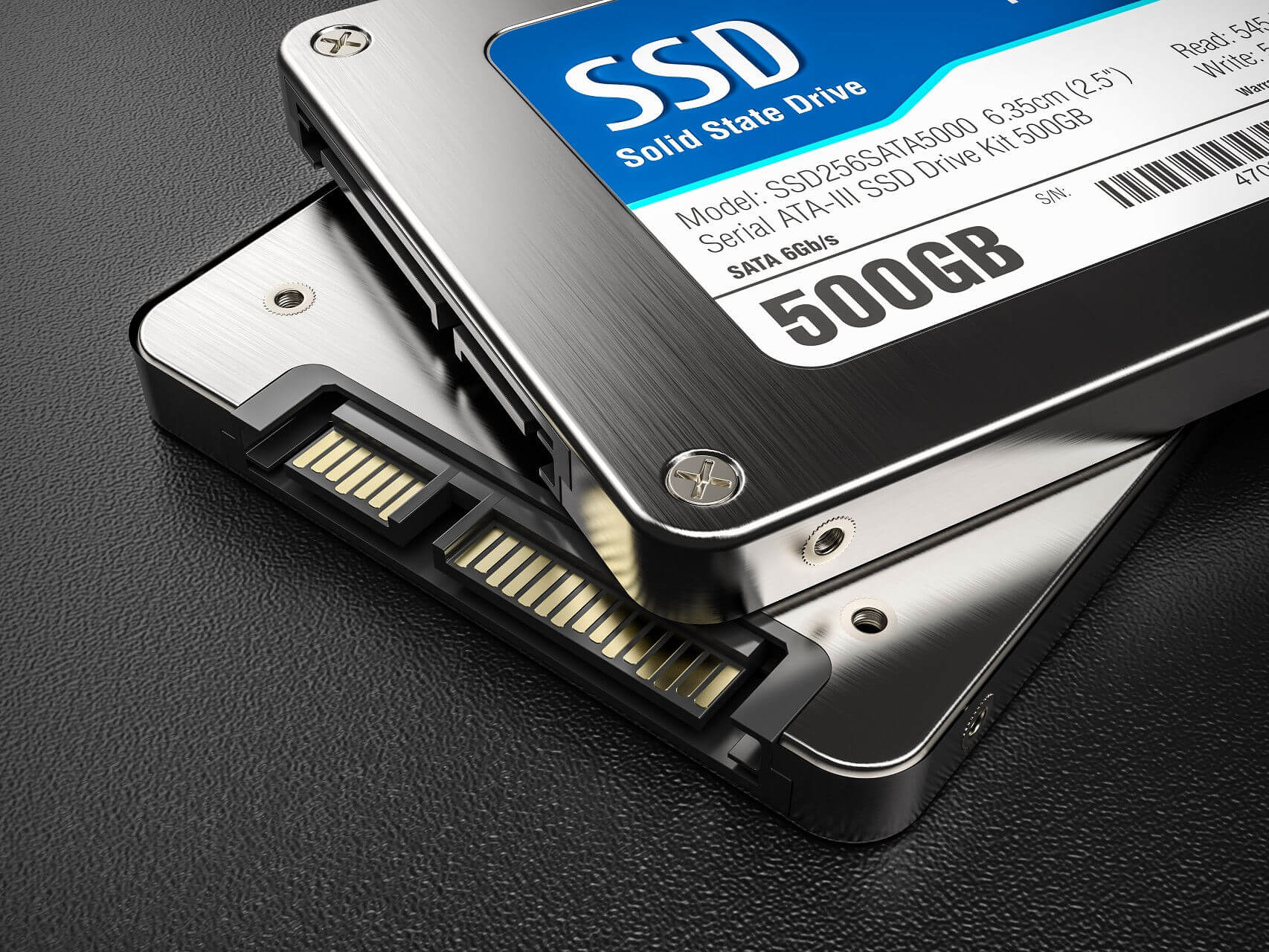Introduction
Welcome to the exciting world of solid-state drives (SSDs). These remarkable devices have revolutionized the way we store and access data, delivering lightning-fast speeds and unmatched reliability. However, there may come a time when you need to permanently destroy the data on your SSD drive, whether it’s for security reasons or simply to dispose of the drive safely. In this article, we will explore various technical ways to destroy an SSD drive effectively.
When it comes to securely disposing of an SSD drive, it’s important to understand that simply deleting files or formatting the drive is not enough. Unlike traditional hard disk drives, SSDs use a different technology called NAND flash memory, which stores data electronically. This means that data can be lingering on the drive even after deletion, posing a potential security risk if the drive falls into the wrong hands.
In the following sections, we will discuss several methods to ensure the complete destruction of the data on an SSD drive. It’s important to note that these methods are irreversible, so be certain that you want to destroy the drive before proceeding.
Technical Ways to Destroy a SSD Drive
When it comes to destroying an SSD drive, there are several effective methods you can employ to ensure that the data on the drive is completely irretrievable. It’s important to note that these methods should only be used if you are certain that you no longer need the data on the drive. Let’s explore each of these methods in more detail:
- Physically Destroying the Drive: One of the most reliable ways to destroy an SSD drive is through physical destruction. This can be done by drilling holes into the drive, smashing it with a hammer, or using a shredder specifically designed for electronic devices. This method ensures that not only the data, but the entire drive is destroyed beyond any possible recovery.
- Overwriting the Data: Another effective method is to overwrite the data on the drive multiple times with random or useless information. This process, known as data wiping or data shredding, ensures that the original data becomes unreadable. There are software tools available that can perform this task securely, following industry-standard algorithms.
- Encrypting the Drive: Encrypting the data on your SSD drive can add an extra layer of protection. By encrypting the drive, even if someone manages to retrieve the data, they won’t be able to access it without the decryption key. However, it’s important to note that encryption alone may not render the data completely irretrievable, so it’s best used in conjunction with other methods.
- Using Secure Erase Tools: SSD manufacturers often provide specialized tools known as secure erase tools. These tools perform a series of commands that effectively erase all data from the drive. However, it’s important to ensure that you use a reputable tool provided by the drive manufacturer to guarantee the effectiveness of the erase process.
- Using Degaussing: Degaussing, a method commonly used for destroying magnetic media, can also be applied to SSD drives. Degaussing involves exposing the drive to a strong magnetic field, effectively scrambling the data and making it unreadable. However, it’s important to note that degaussing may permanently damage the drive, rendering it unusable.
- Using Thermal Shock: Thermal shock involves subjecting the SSD drive to extreme temperature changes. By exposing the drive to high temperatures, such as through incineration, and then rapidly cooling it down, the NAND flash memory can be rendered unreadable. However, like degaussing, thermal shock can also permanently damage the drive.
It’s worth noting that while these methods are effective in destroying the data on an SSD drive, they may differ in terms of complexity, cost, and accessibility. Consider your specific requirements and circumstances before choosing the most suitable method for permanently destroying your SSD drive.
Physically Destroying the Drive
When it comes to destroying an SSD drive beyond recovery, one of the most foolproof methods is to physically destroy the drive itself. By rendering the drive physically unusable, you ensure that no data can be retrieved from it. Here are some effective ways to physically destroy an SSD drive:
- Drilling Holes: One method involves drilling holes through the SSD drive. By puncturing the NAND flash memory chips, you can irreversibly damage the data storage components. However, it’s important to exercise caution and wear protective gear when using this method to prevent injury.
- Smashing with a Hammer: Another straightforward method is smashing the SSD drive using a hammer. By striking the drive forcefully multiple times, you can destroy the internal components, rendering the data unreadable. Take care to wear protective eyewear and gloves during this process.
- Shredding: If you have access to specialized shredders designed for electronic devices, you can use them to shred the SSD drive into small pieces. These shredders ensure complete destruction, pulverizing the drive into irrecoverable fragments.
It’s important to note that physically destroying the SSD drive will not only render the data inaccessible, but it also ensures that the drive itself cannot be reused. This method is ideal when you want to dispose of the drive permanently and have no plans of extracting any components for potential reuse.
Before physically destroying the SSD drive, make sure to disconnect it from any power source and wear protective gear to avoid any harm. Remember that once the drive is physically destroyed, there is no going back, so double-check that you have no valuable data on the drive and that you are absolutely certain you want to proceed with the destruction.
Overwriting the Data
If you want to securely destroy the data on an SSD drive without physically damaging it, overwriting the data is an effective method. By repeatedly writing new data over the existing data, you make the original information unreadable. Here’s how you can overwrite the data on an SSD drive:
Data Wiping Software: There are various data wiping software tools available that can securely overwrite the data on an SSD drive. These tools use advanced algorithms to ensure that the original data becomes irretrievable. They perform multiple passes of writing random or useless data to the drive, effectively obscuring any trace of the original information.
When selecting a data wiping software tool, it’s important to choose one that specifically supports SSD drives. SSDs have different architecture and wear-leveling mechanisms compared to traditional hard disk drives, and specialized software ensures that the data is effectively overwritten on all relevant memory cells.
It’s important to note that the number of data passes needed to securely overwrite the data on an SSD drive may vary. Some experts suggest that a single pass is sufficient due to the nature of SSDs. However, to ensure thorough data destruction, you may choose to perform multiple passes as recommended by the software manufacturer or industry standards.
Before using data wiping software, make sure to back up any data you want to keep because once the process is complete, the data will be irretrievable. Additionally, make sure to follow the instructions provided by the software tool carefully to ensure optimal data destruction performance.
Overwriting the data is a non-destructive method, meaning the SSD drive remains intact and can be reused or recycled. However, keep in mind that once the data is overwritten, it cannot be recovered. This method is suitable when you need to securely erase data from an SSD drive for resale or disposal purposes while keeping the drive functional.
Encrypting the Drive
Encrypting the data on your SSD drive can provide an additional layer of protection to ensure the security of your sensitive information. By encrypting the drive, even if someone manages to access the drive, they won’t be able to decipher the data without the encryption key. Here’s how you can encrypt your SSD drive:
Full Disk Encryption: Full disk encryption is a method of encrypting the entire SSD drive, including the operating system and all stored files. This ensures that all data on the drive is protected, making it unreadable without the encryption key. Most modern operating systems, such as Windows and macOS, provide built-in full disk encryption options.
To encrypt your SSD drive, you would need to set up a strong and unique password or passphrase. This password will be required to unlock the drive and access the data. It’s crucial to choose a password that is complex and difficult to guess to ensure maximum security.
It’s worth noting that encryption alone may not render the data completely irretrievable. If an unauthorized individual gains access to the drive and possesses the encryption key or manages to crack the password, they may still be able to retrieve the data. Therefore, it’s recommended to combine encryption with other destruction methods mentioned in this article for enhanced security.
In addition to full disk encryption, some SSD drives also offer hardware-based encryption options. These drives have built-in encryption capabilities, and the encryption key is stored directly on the drive itself. This provides an additional level of security, as the encryption key is not stored on the computer or external sources.
When encrypting your SSD drive, it’s essential to regularly update your encryption software or firmware to ensure you have the latest security patches. Additionally, always keep a backup of your encryption key in a safe and secure location in case you need to recover your data or access the encrypted drive in the future.
Encrypting your SSD drive is a proactive step to protect your sensitive information from unauthorized access. However, it’s important to remember that while encryption enhances security, combining it with other physical destruction or data overwrite methods ensures the highest level of data irretrievability.
Using Secure Erase Tools
If you’re looking for a reliable and convenient method to securely destroy the data on your SSD drive, using secure erase tools is an excellent option. These tools are specifically designed to effectively erase all data on the drive, ensuring its irrecoverability. Here’s how you can use secure erase tools to destroy your SSD drive:
Manufacturer-Provided Software: Many SSD manufacturers offer their own secure erase tools that are specifically tailored to their drives. These tools have been developed by the manufacturers themselves, ensuring compatibility and optimal performance. It’s recommended to visit the manufacturer’s website or contact their support to obtain the appropriate software for your SSD drive.
Once you have the secure erase tool, follow the provided instructions to initiate the erase process. The tool will perform a series of commands that write zeros or random data over the entire drive, effectively destroying the original data and making it irretrievable. It’s important to note that the duration of the secure erase process can vary depending on the drive’s capacity.
Third-Party Software: In addition to manufacturer-provided tools, there are also reputable third-party software options available for securely erasing SSD drives. These software tools offer added flexibility and support for a wide range of SSD drives. Ensure that the software you choose explicitly states compatibility with SSDs and follow the instructions provided by the software developer.
It’s important to note that secure erase tools work differently from traditional file deletion methods. Instead of simply removing the file pointers, these tools overwrite the entire drive, including any hidden or inaccessible areas, making the data truly irretrievable.
Before initiating the secure erase process, make sure to back up any data you want to keep, as the process will permanently destroy all information on the drive. It’s also recommended to disconnect any other drives from your system to prevent accidental erasure of other drives.
Using secure erase tools is a reliable and efficient method to ensure the complete destruction of data on your SSD drive. These tools offer ease of use and deliver peace of mind, knowing that your sensitive information cannot be recovered by unauthorized individuals.
Using Degaussing
Degaussing is a method commonly used to destroy data on magnetic media, such as traditional hard disk drives (HDDs). However, it can also be utilized to render data on SSD drives irretrievable. Degaussing involves exposing the SSD drive to a strong magnetic field that effectively erases the data stored on it. Here’s how you can use degaussing to destroy an SSD drive:
Understanding the Limitations: It’s important to note that not all SSD drives are susceptible to degaussing. Since SSDs use NAND flash memory, which stores data electronically rather than magnetically, degaussing may not be as effective as it is with traditional HDDs. However, in some situations, degaussing can still cause damage to the internal components of the SSD drive, rendering the data unrecoverable.
Using a Degaussing Device: If you have access to a degaussing device capable of generating a strong magnetic field, you can attempt to use it to destroy the data on the SSD drive. Place the SSD drive in the designated area of the degausser and follow the manufacturer’s instructions to activate the degaussing process.
It’s important to note that using a degausser designed for HDDs may not effectively degauss an SSD drive due to the differences in technology. Therefore, if you decide to use a degausser, ensure that it explicitly supports SSD drives and follow the instructions provided by the device manufacturer.
Permanently Damaging the Drive: It’s important to be aware that degaussing an SSD drive may cause permanent damage, especially if the device is not specifically designed for SSDs. The strong magnetic field can potentially disrupt the delicate circuitry and internal components, making the drive unusable.
Before degaussing the SSD drive, back up any valuable data you wish to retain, as the process will destroy all information on the drive. Additionally, double-check that you are willing to accept the risk of permanently damaging the drive, as there is no way to recover the data once the degaussing process is complete.
Although degaussing may not be the most reliable method for destroying data on SSD drives, it can still be attempted under specific circumstances and with appropriate precautions. Ensure that you consider the limitations and potential risks associated with degaussing before deciding on this method of data destruction.
Using Thermal Shock
Thermal shock is a method that involves subjecting an SSD drive to extreme temperature changes, which can effectively render the data on the drive irrecoverable. By exposing the drive to high temperatures and then rapidly cooling it down, the integrity of the NAND flash memory can be compromised. Here’s how you can use thermal shock to destroy an SSD drive:
Extreme Temperature Exposure: The first step in using thermal shock is to expose the SSD drive to high temperatures. This can be achieved through various means, such as placing the drive in an industrial oven or subjecting it to an open flame. It’s crucial to ensure that the temperature reaches a sufficiently high level to damage the internal components.
Rapid Cooling: After exposing the drive to high temperatures, the next step is to rapidly cool it down. This can be done by submerging the drive in a container filled with ice water or using compressed air to rapidly reduce the temperature. The objective is to subject the drive to a sudden and extreme temperature change, which can cause the NAND flash memory to malfunction.
It’s important to note that thermal shock can potentially permanently damage the SSD drive, rendering it completely unusable. Therefore, it’s crucial to consider this method only when you are certain that you want to destroy the drive beyond recovery.
Additionally, it’s essential to exercise caution and take appropriate safety measures when handling extreme temperatures and open flames. Wear adequate protective gear and ensure proper ventilation to avoid any potential hazards.
Thermal shock is a destructive method that should be used with caution, taking into account the risks associated with permanently damaging the SSD drive. While it may be an effective way to render the data on the drive irretrievable, thorough consideration of alternative methods and their feasibility is recommended.
Safe Disposal of the SSD Drive
Properly disposing of an SSD drive is crucial to ensure the security of your data and minimize environmental impact. Here are important steps to follow for safe disposal of an SSD drive:
Data Destruction: Before disposing of the SSD drive, it’s essential to ensure that all data on the drive is securely and permanently destroyed. Implement one or more of the methods discussed in earlier sections, such as physical destruction, data overwriting, or using secure erase tools. This step ensures that any sensitive information on the drive cannot be recovered after disposal.
Physical Disposal: Once the data on the SSD drive is irretrievably destroyed, it’s time to physically dispose of the drive. Start by ensuring that the drive is completely disconnected from any power source. Then, consider the following options:
- Recycling Programs: Many electronics recycling programs accept SSD drives for proper disposal. These programs ensure that the drives are recycled in an environmentally friendly manner, and any potentially hazardous materials are handled responsibly. Research local recycling centers or electronic waste drop-off locations to find a suitable program near you.
- Manufacturer Programs: Some SSD manufacturers offer take-back programs or recycling initiatives. These programs allow you to return the drive directly to the manufacturer for proper disposal. Check the manufacturer’s website or contact their customer support for details on their specific recycling options.
- Professional Destruction Services: If you require additional peace of mind or have larger quantities of SSD drives for disposal, you may consider hiring professional destruction services. These services specialize in secure data destruction and environmentally friendly disposal methods.
Protecting Your Identity: While destroying the data on the SSD drive is the primary concern, it’s also important to protect your identity during the disposal process. Remove any stickers or labels that may contain personal or sensitive information. If the drive has a removable controller board, consider removing and destroying it separately to further protect any residual data.
Documentation: Lastly, keep a record of the disposal process, including the date and method used for data destruction and the final disposal of the drive. This documentation can be useful for audits, compliance purposes, or in case any issues arise in the future.
By following these steps, you can ensure that the data on your SSD drive is effectively destroyed and the drive is disposed of in a safe and responsible manner. Proper disposal not only protects your sensitive information but also contributes to environmental sustainability by preventing electronic waste from entering landfills.
Conclusion
Destroying an SSD drive to ensure the complete destruction of data requires careful consideration and the use of appropriate methods. In this article, we explored several technical ways to destroy an SSD drive effectively. Physically destroying the drive through methods like drilling, smashing, or shredding can render the data irretrievable. Overwriting the data with the help of data wiping software or utilizing full disk encryption adds an extra layer of protection to prevent unauthorized access.
Using secure erase tools provided by the manufacturer or reputable third-party software offers a convenient and reliable method for data destruction. Degaussing, while more effective for traditional HDDs, can be attempted with caution for SSD drives to potentially damage the NAND flash memory. Similarly, thermal shock through exposure to extreme temperatures and rapid cooling can compromise the integrity of the SSD drive.
Once the data on the SSD drive is destroyed, it’s crucial to dispose of the drive safely. Recycling programs, manufacturer take-back initiatives, and professional destruction services offer responsible disposal options. Protecting your identity by removing labels or stickers, and documenting the disposal process are additional steps to consider.
When selecting a method for destroying an SSD drive, it’s essential to assess the level of irretrievability required, the potential risks associated with each method, and any environmental considerations. By following proper procedures, you can ensure the security of your data and contribute to the responsible management of electronic waste.







